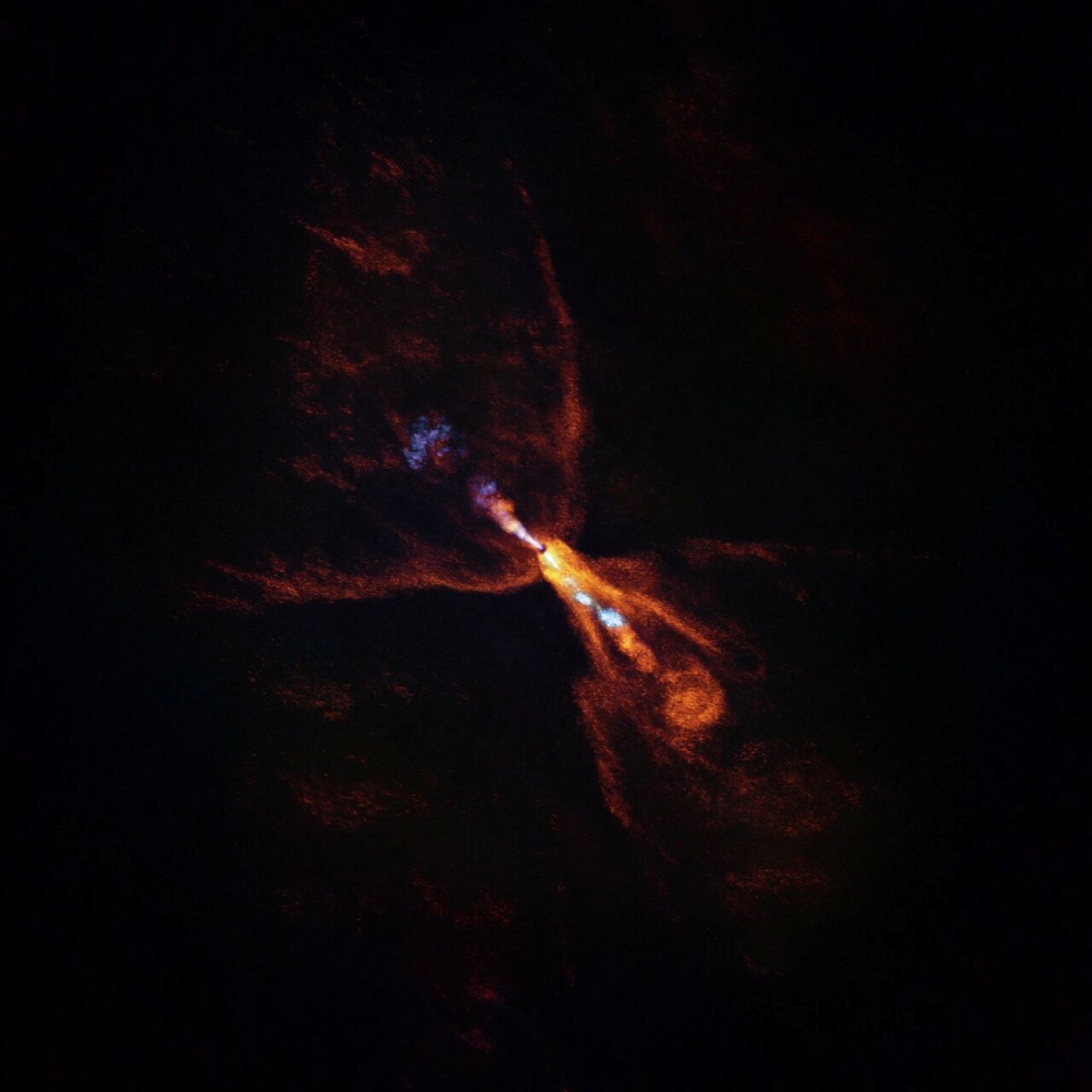International researchers have caught a cosmic baby moment for the first time, the instant tiny particles began forming planets around a distant star. With the help of the ALMA and James Webb Space Telescopes, they watched hot minerals starting to solidify around a newborn star called HOPS-315, which lies about 1300 light-years away and resembles our young Sun.
This is the earliest glimpse we’ve ever had of a planetary system being born, a peek into what our Solar System might have looked like long ago. These baby planets are forming inside a swirling disc of gas and dust, the kind of environment known to cradle giant planets like Jupiter.
Imagine catching the first spark of creation in real-time; that’s what astronomers just did.
Picture the early Solar System as a superheated kitchen swirling with gas and dust. The first “ingredients” to cool and solidify near where Earth now orbits were tiny grains made from fiery minerals, especially ones with silicon monoxide. These grains got locked into ancient meteorites, which act like fossilized time capsules from the dawn of planet-making.
Scientists study these space rocks to figure out when our cosmic clock started ticking. As the grains cooled and condensed, they began clumping together like flour into dough, forming larger lumps that grew and grew. Eventually, these lumps became planetesimals, kilometre-sized space pebbles that paved the way for giant planets like Jupiter and rocky worlds like Earth.
Astronomers have just captured a first-of-its-kind cosmic moment: the birth of solid stardust in a young planetary nursery around HOPS-315, a star still in its baby shoes about 1300 light-years from Earth. Using the powerful eyes of the James Webb Space Telescope and ALMA in Chile, scientists spotted silicon monoxide (SiO) floating as gas and locked into freshly forming crystals, like watching steam turn to snowflakes in deep space.
This marks a monumental first, seeing this mineral solidify outside our Solar System. It’s as if we’ve opened the baby photo album of planet-making and found snapshots Earth never knew existed.
JWST detected the ingredients. ALMA pinpointed the kitchen. It’s a glimpse into the first recipe steps for baking planets. Next time you look up at the stars, imagine entire worlds quietly cooling and crystallizing in glittering clouds of cosmic dust.
Melissa McClure, a professor at Leiden University in the Netherlands and lead author of the new study said, “For the first time, we have identified the earliest moment when planet formation is initiated around a star other than our Sun.”
Co-author Merel van ‘t Hoff, a professor at Purdue University, USA, compares their findings to “a picture of the baby Solar System”, saying that “we’re seeing a system that looks like what our Solar System looked like when it was just beginning to form.”
The team found chemical signals in a small part of the disc around the baby star HOPS-315 — the same region that matches where our asteroid belt orbits the Sun. They even saw the same kinds of minerals there that appear in ancient space rocks from our Solar System.
Because of this, HOPS-315 acts like a window into the past, giving us a chance to study how planets first formed, like hitting rewind on the Solar System’s birth. It’s one of the best examples scientists have to explore planet-making, helping us understand other young star systems across the galaxy.
ESO astronomer and European ALMA Programme Manager Elizabeth Humphreys, who did not take part in the study, says: “I was really impressed by this study, which reveals a very early stage of planet formation. It suggests that HOPS-315 can be used to understand how our own Solar System formed. This result highlights the combined strength of JWST and ALMA for exploring protoplanetary discs.”
Journal Reference:
- McClure, M.K., van’t Hoff, M., Francis, L. et al. Refractory solid condensation detected in an embedded protoplanetary disk. Nature 643, 649–653 (2025). DOI: 10.1038/s41586-025-09163-z
